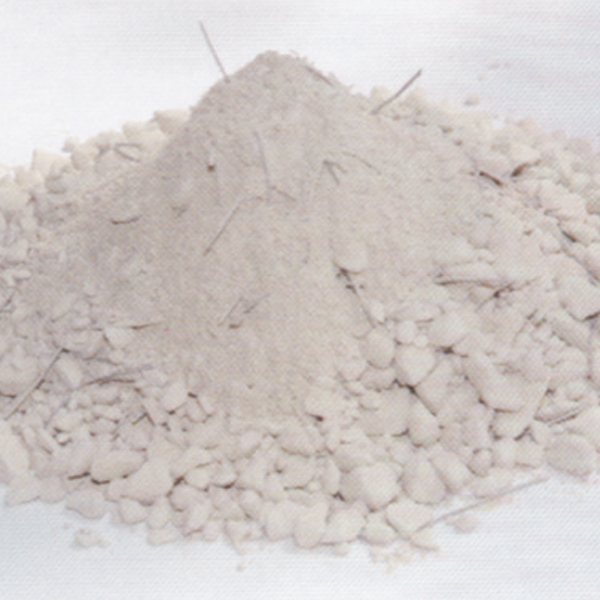Contact: Lin Manager
Mobile phone: 182-4265-7979
Landline (fax): 0417-5845558
Website: www..csnh10.com
en.csnh10.com
Address: Nanlou Economic Development Zone, Yingkou City, Liaoning Province
Ladle is an important equipment in the steelmaking industry. As the refractory material for the lining of the ladle, several major changes have taken place. High-quality magnesia-aluminum chrome bricks used to use traditional sintered clay bricks and third-class alumina bricks. This refractory material shows poor spalling resistance and corrosion resistance during use, and has a low service life. Only 10 times, after treatment, it can only reach about 20 times. With the development of steelmaking technology, the requirements for refractory materials for the lining of ladle linings in the external refining of molten steel have increased. In the early 20th century, the use of integrally cast magnesium-aluminum ladle lining materials was once promoted. This kind of lining has good integrity and significantly improves the service life, but there is a long time to bake the ladle, and there is a serious phenomenon. It is difficult to unpack when most small and medium steel plants do not have equipment. In order to make up for this shortcoming, aluminum-magnesium non-fired bricks were successfully applied. The lining brick is easy to build, short baking time and easy to unpack, but still has the problems of easy slagging and poor resistance to peeling. On this basis, in order to overcome the problem that the lining of the aluminum-magnesium non-burned brick ladle is easy to cat slag, the aluminum-magnesium-carbon non-burnable brick was developed in the later period to replace the aluminum-magnesium non-burnable brick. This material combines the properties of aluminum-magnesium materials and carbon-containing materials. The main advantages of aluminum-magnesium-carbon non-fired bricks are: no brick joint melting loss, good slag resistance and thermal vibration resistance, overcoming the structural spalling phenomenon caused by the penetration of molten steel and slag, and significantly improving the service life. Because the product is not fired or fired at low temperature, it saves energy, reduces costs, and has obvious economic benefits, which has attracted people's attention. Electric furnace magnesia carbon brick
As early as the 1960s, magnesia-aluminum spinel bricks had been developed but were not put on the market. In order to solve the problems in the production and use of chromium, Japan introduced spinel-containing magnesia bricks in the 1970s. That is, sintered spinel is added to magnesia, and magnesia spinel bricks are fired in a tunnel kiln at high temperature (1900°C). Spinel is used to replace chromium oxide and iron oxide.

Various magnesia-aluminum spinel bricks came out in those days, but their service life was not as good as that of chrome-magnesia bricks. After clarifying the cause of the damage, the performance of this type of brick has been fundamentally improved, which can rival the chrome-magnesium brick.
The excellent properties of magnesia products combined with spinel (magnesia-aluminum spinel), such as slag resistance, spalling resistance and creep resistance have long been known. Research has been conducted since 1942, and product development has been conducted in 1964. However, Europe did not show greater interest in this product until the end of the 1970s. Japan began to use magnesium aluminum spinel in the cement industry in 1976. Stone bricks. In recent years, there has been an increasing international research on magnesium aluminum spinel and its products.
In the 20th century, my country began to use alumina and magnesite (or light-burned MgO) to synthesize magnesia-aluminum spinel raw materials. In recent years, a series of researches on the preparation of magnesia-aluminum spinel combined with magnesia products have been carried out, and many achievements have been made. However, high-purity products with excellent performance have been limited by the high firing temperature. Some people in China use activated spinel powder to reduce the foreign warm firing process (1850°C) to 1660°C. However, it is still possible for ordinary refractory kilns that generally use coal as fuel. For this reason, domestic refractory experts and scholars used self-made active magnesia-aluminum glue as a binder, and studied the properties of high-purity magnesia bricks and spinel combined with magnesia-aluminum glue as a binder. The two products with excellent performance can be fired at 1550°C, which provides the possibility for firing such advanced products in the kilns of ordinary refractory plants.
High quality magnesia aluminum chrome brick
Refractory researchers and experts in some large domestic steel companies have recently developed and applied magnesia-aluminum spinel non-fired bricks. Through the actual production of active lime returning to the brick kiln, the magnesia-aluminum spinel non-burned brick was developed. The use shows that the developed magnesia-aluminum spinel non-burned brick has a burning service life of more than one year in the active lime rotary kiln. For a long time, direct-bonded magnesia-chrome bricks have excellent slag resistance and corrosion resistance, and have been widely used in large alkaline rotary kilns. However, with the increasingly serious environmental protection issues, the hexavalent chromium produced after the use of magnesia-chromium products has become a global problem. For this reason, research has been conducted on magnesium-aluminum with good exfoliation resistance, low thermal expansion rate, less structure degradation and corrosion resistance. It is a refractory material, which is used as an alternative material for magnesium-chromium refractory material in alkaline rotary kilns. Since the emergence of unshaped refractories in the early 20th century, they have gradually been widely used in the metallurgical industry. Today, the production of unshaped refractories in some industrially developed countries accounts for almost half of the total refractory materials. At present, the steel industry has a wide range of applications. The refractory materials used are magnesium-aluminum unshaped refractories, accounting for about 85% of the total production of unshaped refractories. They are widely used in converters, ladles, iron ladles, heating furnaces and blast furnaces. Metallurgical thermal equipment.
Magnesium aluminum spinel (MgO·Al2O3) has a high melting point, small thermal expansion, low thermal stress, and good thermal vibration stability. At the same time, it has relatively stable chemical properties and has strong resistance to alkaline slag. It is the point where the aluminum-magnesium non-burning brick can be used, and it is one of the key materials to improve the life. Due to the gradual maturity of synthetic magnesia-aluminum spinel technology in recent years, it is possible to directly produce ladle bricks using synthetic spinel materials, which can significantly improve its characteristics.
The quality of magnesia spinel is one of the key issues related to whether the magnesia spinel brick can achieve the appropriate effect. Through the test screening in the laboratory and the introduction of relevant materials, the magnesium-rich spinel has good corrosion resistance, structural peeling resistance and thermal vibration resistance at 20% to 30%. However, there are many factors in the production and operation of the ladle, and it is more reasonable to require the addition of magnesium aluminum spinel to be between 30% and 40%. Therefore, in the process of making bricks, in addition to the produced artificial spinel, fused magnesia banknote powder and corundum powder are also added to make it regenerate secondary spinel during use, thereby improving the quality of the brick tomb. In order to control the content of harmful impurities in raw materials, Na20 and K2O, which are low-melting substances, the selection of raw materials needs attention.
The chemical formula of magnesium aluminum spinel (also called spinel) is MgO-Al2O3, containing 28.3% Mg0 and 71.7% Al2O3. Spinel is an intermediate compound in the phase diagram of the Mg0-Al2O3 binary system, and its melting point is 2135°C. Bartha pointed out that compared with magnesia-chromium spinel, the main advantages of magnesia-aluminum spinel are corrosion resistance to reducing atmospheres such as free CO2, free SO2/SO3 and free K2O/Na2O, as well as better thermal stability and Sex. The Na2O content of most spinel refractories currently produced and used in industry is between 8% and 15%.
The production process of magnesia alumina spinel brick is as follows.
Magnesia (or fused aluminum spinel sand)-crushing-sieving (fine grinding-fine powder)-raw materials-mixing-forming-drying-high temperature firing-products
Magnesium sand and fused magnesia-aluminum spinel sand are crushed according to the process, so that the aggregate particle composition and fine powder fineness meet the process requirements. The prepared aggregate and fine powder are strictly weighed according to the process requirements, and the inner binder is added; mixed in the mixer for 15-20 minutes. Friction brick press model, the semi-finished product is dried for 8-16h; the dried bricks are fired in the tunnel kiln, and the firing temperature is 1660-1680℃.
The raw materials of magnesia-aluminum spinel non-fired bricks are medium-grade sintered magnesia, pre-synthesized magnesia-aluminum spinel, silica powder and alumina powder.
Since unburned bricks do not need to be fired at high temperature, they can be directly used for masonry after baking. Therefore, the room temperature strength requirements for unburned bricks are relatively strict, and the binder used must also meet; for unburned bricks with magnesia as the main composition It has a good bonding effect. The pressed bricks must have a mold strength, and reach a normal temperature strength above 40MPa after baking, which can meet the requirements of transportation and masonry; the bonding agent is easy to use. Does not complicate the production process: the bonding performance of the bonding agent should be It is strong, and the added amount should be small, so as not to greatly reduce the high temperature performance of the unfired brick.
Contact: Manager Lin Electric Furnace Magnesia Carbon Brick
Mobile phone: 182-4265-7979
Website: www.csnh10.com
Address: Chenjia Village, Nanlou Economic Development Zone, Yingkou City, Liaoning Province

Scan to learn more